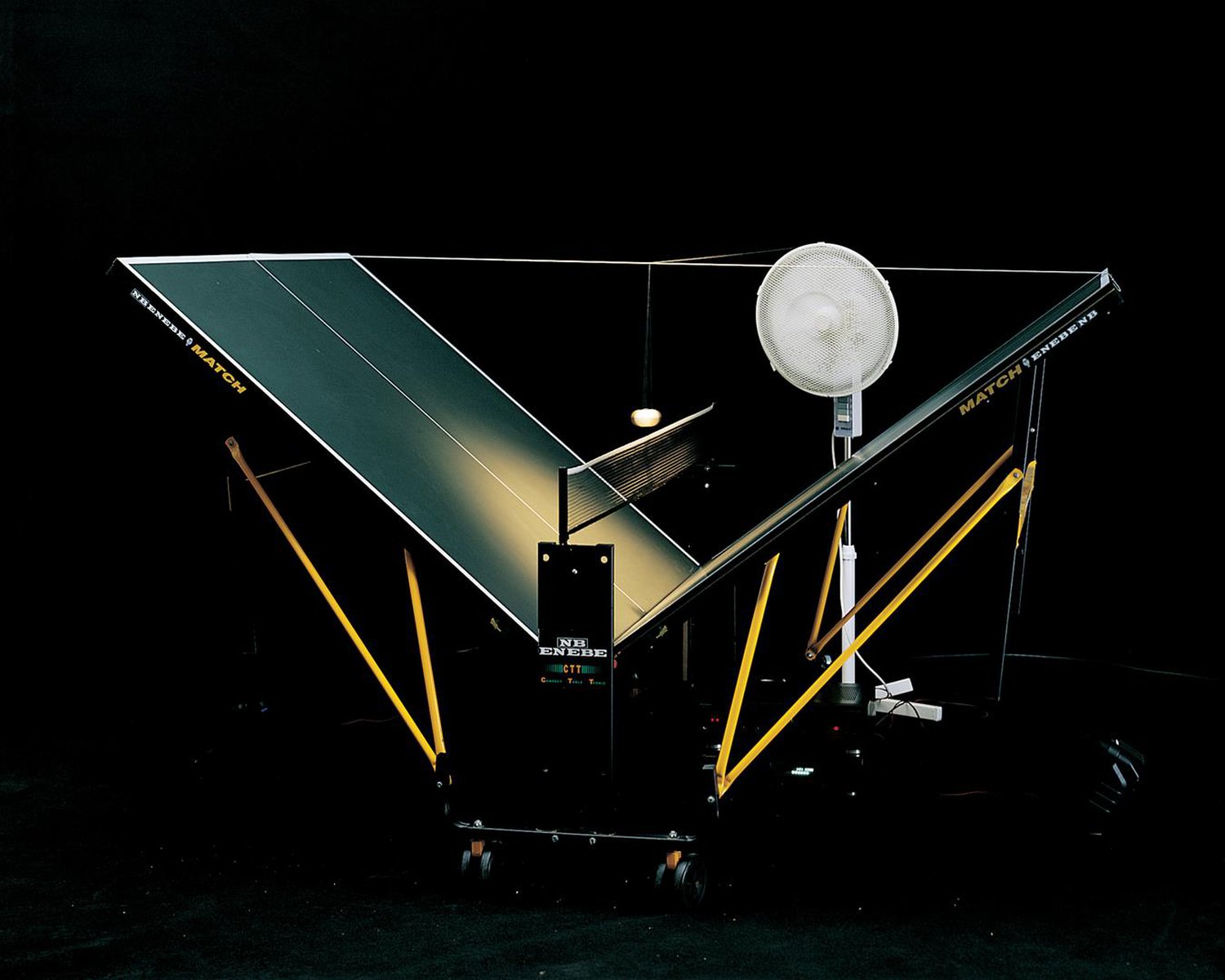Ping-pong Piece, 1999, is a sculpture by Ricardo Jacinto purchased for the Collection Caixa Geral de Depósitos in 2005. The work is our current highlight as it is on loan to the exhibition “A Syllabary to Reconstruct”, curated by José Maçãs de Carvalho and Tiago Candeias. The show will be opened at MACE – Museu de Arte Contemporânea de Elvas, between 19 July and 19 October 2025.
Ricardo Jacinto’s work has been, since the end of the 90s, a liminal to architecture, visual arts and music thus reflecting his multidisciplinary background. He graduated in Architecture from Faculdade de Arquitetura, Universidade Técnica, Lisbon, attended the Sculpture and Visual Arts course at Ar.Co – Centro de Arte e Comunicação Visual, Lisbon, and furthered his studies in Sound, Music and Video at the School of Visual Arts, New York. He was artist in residence at the Cité Internationale des Arts, Paris. Having began his musical training at Academia de Amadores de Música, he then attended Hot Clube de Portugal, Lisbon, and went on to complete a PhD in Music and Sound Arts from Sonic Arts Research Centre, Belfast. His artistic practice is an ongoing investigation of physical space, image and sound, exploring dreamlike and poetic dimensions through immersive installations. Frequently using everyday objects, the artist builds sensory devices that establish engaging and unexpected rapports with viewers, challenging the boundaries between the visible and the audible, the real and the imagined.
Ping-pong Piece, 1999, is based on an act of appropriation — a ready-made. A semi-open ping-pong table, turned useless for the game, is transformed into a visual and sound sculpture. In the centre of the table, a ping-pong ball suspended by a string is kept swinging over the net as it is blown by the air stream of a fan. This installation is enveloped by the low sound of an electric bass and lit by a theatre spotlight, creating an experience which is visual, auditive and spatial, all at once. The entire scene seems infused with a latent narrative, one that questions the viewer about what he sees, hears and feels. Delfim Sardo points out that “interpretation, an exercise we [sometimes] excessively assign to our rapport with contemporary art, is suspended, put in brackets, because, as viewers, we are asked to pay our best attention and to make ourselves available for the sensory disruption which is being served to us.” As is the case in other works by Ricardo Jacinto, Ping-pong Piece challenges the conventions of sculpture and installation and subverts the notion of a work of art as a fixed and definitive object. In the words of Ricardo Nicolau, “Ricardo Jacinto disproves the idea that a work of art must correspond to an irreversible process that culminates in a static, iconic object.”
Ricardo Jacinto’s practice is also characterized by a strong collaborative dimension, involving artists, musicians, architects and performers in interdisciplinary projects that expand the boundaries of contemporary creation. He is co-founder of OSSO – Associação Cultural, Caldas da Rainha, a platform dedicated to artistic experimentation and transdisciplinary research. In collaboration with Pancho Guedes, he represented Portugal at the Venice Architecture Biennale in 2006, reinforcing his presence on the international art scene and architecture scene.
Hugo Dinis
137 x 218 x 248 cm
Inv. 595756


